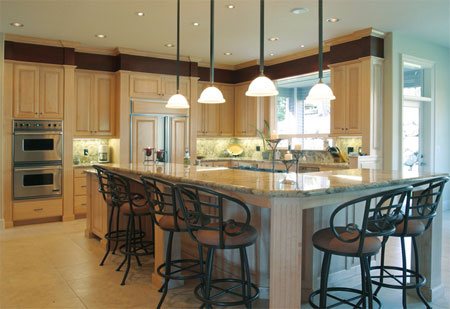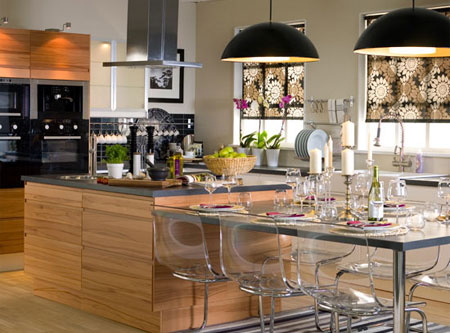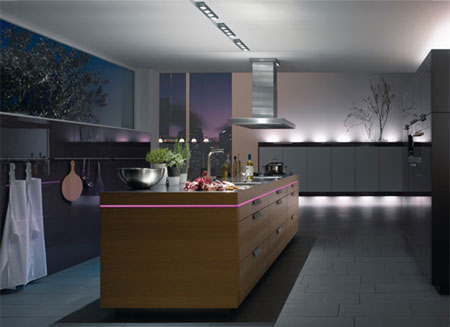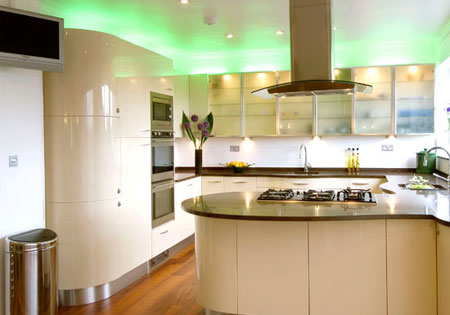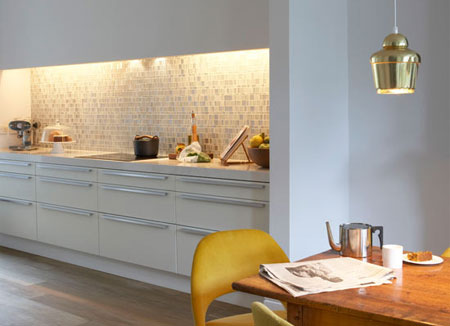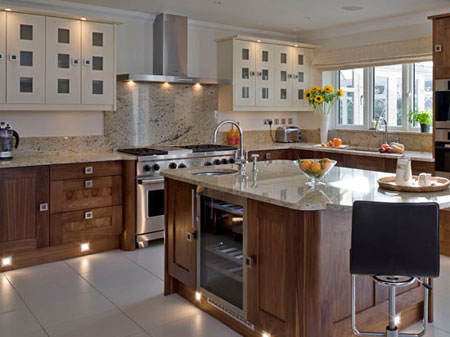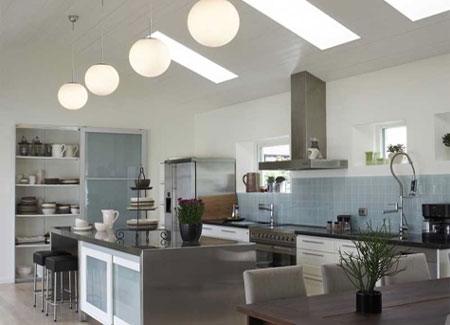Lighting tips for a kitchen
The kitchen is primarily a work area, but it is also a gathering place for family and friends. Lighting that is comfortable, as well as functional, is required.
Your kitchen, more than any other room in your home, needs a good well thought out lighting plan. Today’s kitchens have many more functions than just cooking a meal. For many families it is the most frequently used room in the house. Besides the obvious preparation of meals, kitchens today are also a place for the kids to do homework, parents to pay the bills, reading, eating and watching TV. For this reason it is important that the light not only be adequate but flexible.
A lighting plan
The placement of the lights is very important. When designing a layout for the general lighting in a kitchen, take into account the areas where tasks will be done. This includes counters, islands and tables. In most cases, by designing the light to illuminate these areas, the rest of the room gets a good spread of general light as well.
Try to have the recessed lights fall out on the ceiling so that they are directly above the outside edge of the cabinets. The key here is getting the lights close enough to the work area so that you don’t create a shadow with your body.
Putting the lights to far away from the counters is a sure formula for shadows. Don’t overlook any nooks that may be dark.
Islands can provide a great outlet for adding a decorative fixtures. There are a multitude of pendants to choose from that can really enhance the room. I find it is probably one of the most commented on aspects of a kitchen lighting plan when the homeowner sees the finished product. Simply installing 2 or 3 pendants in line over an island can be quite stunning.
The next step is the task lighting. In a kitchen this is the light directly over the counters, stove and sink. Having one or two small recessed lights on a separate switch over the sink is both attractive and useful.
The stove these days is almost always lit from a fan hood or microwave but if it is not it should be addressed.
The way the counters are illuminated is with under cabinet lighting. This can be in the form of simple fluorescent fixtures on an economical level. A very nice effect is to use low voltage linear track. These can be dimmed and provide very good light to the counters. There are also xenon fixtures and halogen fixtures. If you can try and stay with xenon as they burn cooler and have a longer bulb life than halogen.
After you have your general lighting and task lighting covered the last thing to consider is any accent lighting. On some kitchens where there is a space above the cabinets, lighting on top of the cabinets can look spectacular. Tray ceilings with crown molding can also benefit greatly from this type of lighting. Using either a low voltage type track or rope light, you can add that extra touch that makes your kitchen unique.
At the sink and range, an individual recessed downlight, equipped with an energy-efficient compact fluorescent tube, will provide you with adequate task lighting when installed in the ceiling or in soffits over these two busy work areas.
Dinettes, nooks, and island counters can be lighted with decorative pendants. When used with a dimmer control, these ceiling-hung fixtures will provide you with adequate task lighting for homework, hobbies, or family business and allow you to lower the light for dining or entertaining.
Undercabinet lighting is ideal for countertops. Mount as close to the front of the cabinets as possible to avoid glare reflecting off work surfaces. Choose energy-efficient fluorescent fixtures that cover at least two-thirds the length of the counter.
Kitchen cabinets can be accentuated by placing low-voltage mini-lights over, under, or inside cabinets. Soffits and other concealed locations can also be treated effectively with this type of lighting. These inconspicuous strips of miniature incandescent bulbs will highlight your cabinetry, while adding a warm, comfortable atmosphere to your kitchen.
Last, but not least, wherever possible let in as much natural light as you can. Nature still provides us with the best lighting and during daytime you can rely on natural light to highlight task areas.

